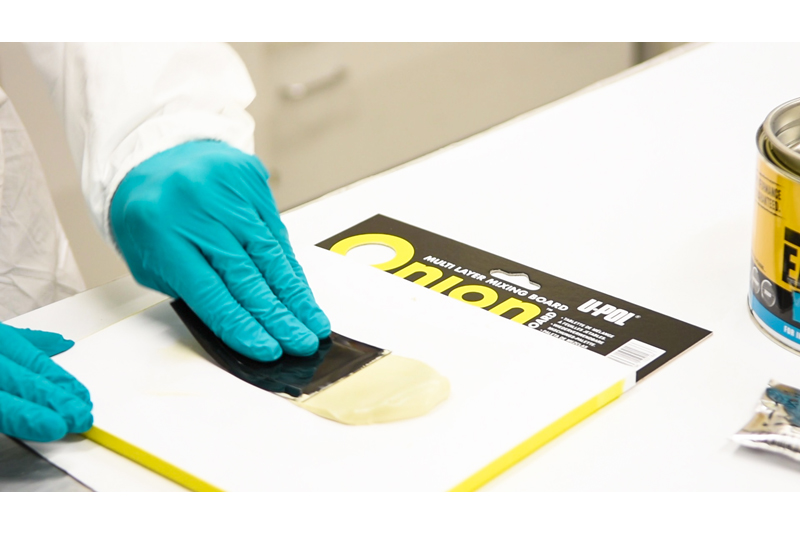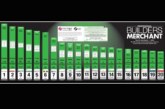
U-POL has announced it has entered the professional decorating scene, after obtaining decades of pedigree in the automotive bodyshop sector.
PBM spoke with CEO Guy Williams to find out more about the company and the reasons behind its new approach.
For those who haven’t heard of U-POL before, could you give us a brief overview of the business and its expertise?
Historically, U-POL is a market leader in automotive refinishing products; specialising in fillers, coatings, aerosols, adhesives and paint-related products.
From the merchant perspective, there are synergies between professional car preparation fillers and requirements for the decorating professional, so a new range of construction fillers that combine the technical expertise of automotive with products developed specifically for the decorating trade should appeal.
As such, we have now harnessed our experience in the automotive sector to produce a range of construction fillers: Easy Fill, Tough Fill and Fast Fill.
You seem to have arrived in the decorating sector more-or-less fully fledged — so what’s the background?
U-POL was the first company to introduce two-part fillers to the nation and has a long UK manufacturing heritage stretching back 70 years. It was founded by Walter David in the late 1940s, and has spent nearly three-quarters of a century servicing the bodyshop repair sector with its manufacturing and technical development now based in Wellingborough, Northamptonshire.
In retail environments, many would have come across our perhaps best-known brand, Isopon P.38 — beloved of classic car enthusiasts, and historically marketed as a filling panacea for everything from boats and cars through to electrical appliances and footwear, as our heritage advertising testifies.
It was clear that the advanced technology of U-POL automotive fillers had an application in the decorative industry.
From the merchant perspective, fillers might just be fillers. What’s the difference and why should they care?
As most merchants will know, the professional market is very much in 1K — or ‘one-part’ — products, such as the wide range of ready-mixed fillers on offer. These are obviously convenient to use, yet do have their limitations.
As they cure by evaporation, shrinkage is likely during the drying process and filling work will need revisiting. Similarly, for this reason, it is hard to achieve ‘build’ with them and renders them less suitable for deep filling. And if used for deep fills, drying times can be very slow; preventing trades getting on with the next decorative stage and/ or getting off the job sooner.
If also used for large areas, once set and due to the possibility of shrinkage, cracking may occur too.
Two-part fillers are superior in all ways to the standard one-part products predominant in the industry. These construction fillers combine the durability and toughness only associated with two-part technology to give a superior finish which can be ready for painting in as little as 20 minutes.
Micro-bead technology results in fillers that are ultra-easy to sand and can fill to any depth. The products are suitable for interior and exterior repairs, don’t crack or shrink and can be drilled, screwed or nailed. In some proprietary formulations, 2K technology can bear loads over 37kg — and all can be used on multiple substrates.
Personally, you have a long-established background in the decorating sector as MD of Dulux. Are there any significant differences between your approaches to paints and to fillers?
Technological and performance requirements in the automotive industry are much higher as, in addition to protecting against the elements, car products must combine extreme durability with a very high level of appearance. The substrates in the automotive market can also be very challenging as they include metal and plastic materials; which can be harder to work with than masonry, wood and so on.
The automotive aftermarket sector is considered by many to be a fast-moving and tough one. Does it have anything to teach builders’ merchants, or do merchants have anything to teach it?
From the merchant perspective, the automotive aftermarket is comparative — being an extremely tough place to do business, whether for ‘soft’ or ‘hard’ parts — as when dealing with building products.
If there is a difference in the automotive world, it is that a huge amount of time and considerable resource is put into technological advancements to ensure products are keeping pace with new innovations in car substrates and material trends. This is not to say this is not the case for building products as such, yet the automotive sector tends to lead the way.
Is the battle between wallcoverings — paint versus wallpaper — over? Has one won, or is it an uneasy truce? And as a manufacturer of fillers — surface preparation products — do you care?
Any surface, whether to take paint or wallpaper, needs to be finished to a very high standard and preparation is a very important part of the whole process. So we’re focussed on exceptional preparation products to create the best surface finish whatever the job, and regardless of whether paint or wallpaper is used.
Click here for more information on U-POL’s new range of construction fillers.
(Article originally featured in the May issue of Professional Builders Merchant).









